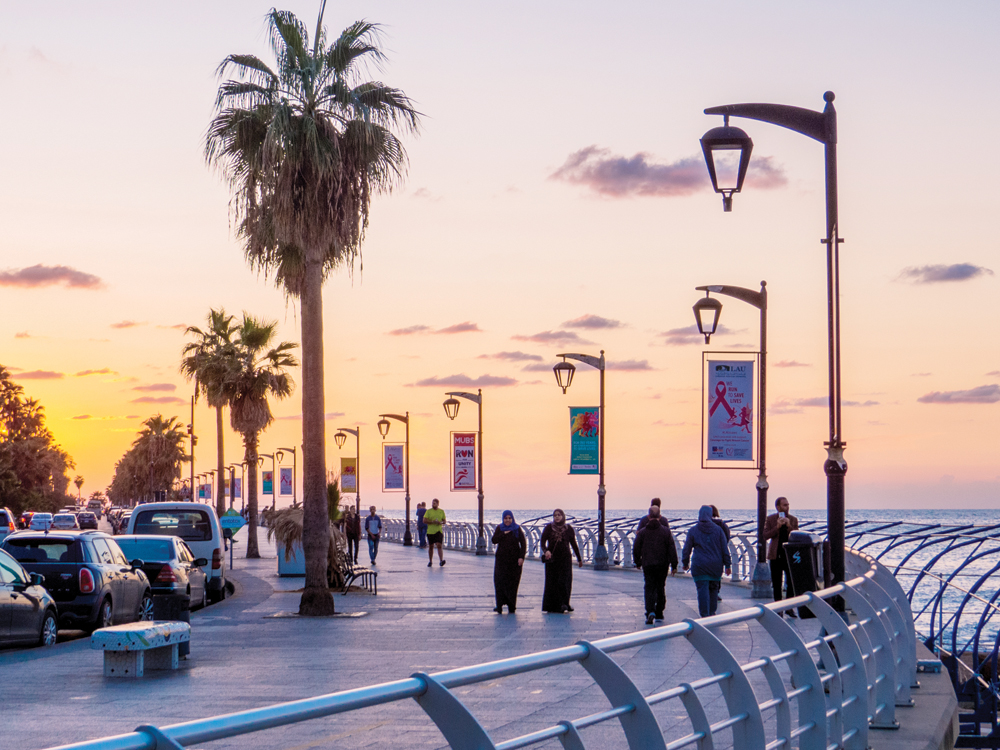BEIRUT: Lebanon is gearing up for an influx of tourists from the Gulf, especially from Saudi Arabia, since it lifted a warning against its citizens traveling to the country.
The easing of restrictions since February, together with the formation of a new government in Beirut and greater political stability, has led to around 20,000 Saudis visiting Lebanon in the past few months.
Rima, from Riyadh, said she used to visit Lebanon before the start of Ramadan for tourism and shopping. She told Arab News that the end of the travel warning would encourage other Saudis to visit Lebanon and that the country meant a lot to her fellow citizens.
Her mother said that Ramadan would be spent in Riyadh, but that they would return after the Eid Al-Fitr holidays in June.
Thousands of Saudis have already booked their flights to Lebanon during Ramadan and these numbers were rising, Saudi travel agencies told Arab News.
“With the ban on Saudi travel to Lebanon, out of 100 passengers you could barely find three Saudi nationals maximum on flights heading from Riyadh to Beirut. However, that number has risen steadily since the ban was lifted,” sources told Arab News.
Pierre Al-Achkar, head of the Syndicate of Hotel Owners in Lebanon, said Gulf tourist numbers had improved compared to previous years. “Hotel bookings for Eid Al-Fitr are not quite clear, as Gulf tourists plan their vacation just 10 days ahead unlike Europeans who plan months before their vacation,” he told Arab News. “Before Ramadan, Lebanon hosted a tourist delegation of Saudi businesswomen, some of whom work in the marketing and media sectors. They were amazed, comparing Lebanon to Europe.”
Nora, a Saudi young woman on her third visit to the Middle Eastern country, explained why she liked Lebanon. “It is an Arab country and a melting pot for Arabic and European civilizations, which sets it apart from other modern places such as Dubai and New York,” she told Arab News.
She also said she preferred Riyadh’s “broad and straight” roads to Beirut’s “narrow and winding streets,” when asked about driving on holiday.

Cafe in central Beirut. (Shutterstock)
More people have visited Lebanon since Saudi Arabia lifted its travel warning in February, Reuters quoted Prime Minister Saad Hariri as saying last month, as he pointed to a “promising summer” ahead.
Saudi Arabia had been advising its citizens since 2011 to avoid Lebanon, citing Hezbollah’s influence and instability from the war in neighboring Syria, the agency added.
“Without doubt the Saudi leadership’s decision ... had the most impact in increasing the number of visitors to Lebanon recently, which gives the best proof of a promising summer,” Hariri said at an April conference in Beirut that was also attended by the head of the King Salman Humanitarian Humanitarian Aid and Relief Center.
Riyadh earlier this year released $1 billion in funding, pledging to boost Lebanon’s struggling economy. Another sign of warming ties was an anniversary event marking the 2005 assassination of Hariri’s father that featured Saudi Royal Court adviser Nizar Al-Aloula as a keynote speaker.
Umm Yusuf was visiting Lebanon after previous tourism stops in London and Istanbul. She said her family had not traveled to Lebanon since 2006, when there was a war between Israel and Hezbollah.
Her husband said Ramadan would be spent in Saudi Arabia “to feel the meaning of fasting” and that they would return to Lebanon after Eid-Al Fitr.
Jean Abboud, president of the Association of Travel And Tourist Agents in Lebanon, said that 2010 was the strongest year for tourism and that there had been around 190,000 visitors from the Gulf.
Lebanese authorities were expecting to get close to that number and maybe even exceed it after Eid Al-Fitr and during the long summer vacation, he said, adding that Gulf holidaymakers were no longer traveling overland because of the Syrian war.
“We are now relying on the tourist traveling by air, although this type of travel costs higher,” he told Arab News. “Iraqi, Jordanian and Egyptian tourists replaced Gulf tourists. But, in terms of spending, they are not to be compared. The Gulf tourist spends between $3,000 and $4,000 daily, while others spend $400 at best.”
Abboud described the numbers of Gulf tourists in Lebanon during Ramadan as “timid” but that high season started from June 7 and ran until late September.
“Lebanese internal political debate does not affect tourism to Lebanon, but regional lineups are the most influential.”
There have been steady increases in passenger numbers at Beirut-Rafic Hariri International Airport since the start of the year.
Airport authorities are improving passenger flow by repositioning security counters in the departure terminal, to be completed by the end of May, after Gulf travelers complained about delays and queues.

Sunset on La Corniche, a seaside promenade in Beirut Central District. (Shutterstock)



























